Tecmate Optimate Solar Handleiding
Tecmate
Batterij-oplader
Optimate Solar
Bekijk gratis de handleiding van Tecmate Optimate Solar (10 pagina’s), behorend tot de categorie Batterij-oplader. Deze gids werd als nuttig beoordeeld door 75 mensen en kreeg gemiddeld 4.5 sterren uit 38 reviews. Heb je een vraag over Tecmate Optimate Solar of wil je andere gebruikers van dit product iets vragen? Stel een vraag
Pagina 1/10

INSTRUCTIONS FOR USE
IMPORTANT: Read completely
before charging
MODE D’EMPLOI
IMPORTANT: à lire avant
d’utiliser l’appareil
ANWENDUNGSVORSCHRIFTEN
WICHTIG: Vollständig vor der
Benutzung lesen
GEBRUIKSAANWIJZING
BELANGRIJK: Lees volledig
voor gebruik
MODO DE EMPLEO
IMPORTANTE: a leer antes
de utilizar el aparato
INSTRUÇÕES DE UTILIZAÇÃO
IMPORTANTE: Ler antes
de utilizar.
ISTRUZIONI PER L’USO
IMPORTANTE: da leggere prima
di utilizzare l’apparecchio
INSTRUKTIONER
VIKTIGT: läs följande fullständiga
instruktioner för användningen
innan du använder laddaren
INSTRUKCE PRO POUŽIT.
DŮLEŽIT: Přečtěte si pozorně
před použit.m
+ -
solar
Opti
CZ
Models: TM522-1 : TM522 + TM525 10W polycrystalline panel
OUT: 12V 0.83A max.
TM522-2 : TM522 + TM526 20W polycrystalline panel
OUT: 12V 1.67A max.
TM522-3 : TM522 + TM527 30W polycrystalline panel
OUT: 12V 2.50A max.
TM523-4 : TM523 + TM528 40W polycrystalline panel
OUT: 12V 3.34A max.
TM523-5 : TM523 + TM529 50W polycrystalline panel
OUT: 12V 4.17A max.
TM523-6 : TM523 + TM530 60W polycrystalline panel
OUT: 12V 5.00A max.
TM523-8 : TM523 + TM531 80W polycrystalline panel
OUT: 12V 6.67A max.
MODEL : Solar charge controller and battery monitor for 12V TM-522
lead-acid batteries, for solar panels from 10–30W.
IN : 12V SOLAR PANEL 10–30W
OUT : DC output voltage : 12V
DC output current : 2.5A max.
MODEL TM-523: Solar charge controller and battery monitor for 12V
lead-acid batteries, for solar panels from 40–80W.
IN : 12V SOLAR PANEL 40–84W
OUT : DC output voltage : 12V
DC output current : 7A max.
Automatic solar charge controller & monitor
1 x Solar charge controller charges 1 x Lead-Acid battery
Battery types: Flooded STD with liquid acid electrolyte /
removable filler caps / EFB
Sealed AGM-MF / GEL / CYCLIC CELL
copyright ©2017 TecMate International TM522x-IN1 171005
1
4
OptiMate Solar charge controller-monitor and panel kits

4
12. PREPARING TO CHARGE
a) If necessary to remove battery from vehicle to charge, always remove grounded terminal from battery first.
Make sure all accessories in the vehicle are off, so as not to cause an arc.
b) Be sure area around battery is well ventilated while battery is being charged. Gas can be forcefully blown away by using a piece of
cardboard or other non-metallic material as a fan.
c) Clean battery terminals. Be careful to keep corrosion from coming in contact with eyes.
d) Add distilled water in each cell until battery acid reaches level specified by battery manufacturer. This helps purge excessive gas from
cells. Do not overfill. For a battery without cell caps, such as valve regulated lead acid (VRLA) or absorbed glass mat (AGM) batteries,
carefully follow manufacturer’s recharging instructions.
e) Study all battery manufacturer’s specific precautions such as removing or not removing cell caps while charging and recommended
rates of charge.
f) Determine voltage of battery by referring to vehicle or other user’s manual and BEFORE MAKING THE BATTERY CONNECTIONS, MAKE
SURE THAT THE VOLTAGE OF THE BATTERY YOU ARE GOING TO CHARGE MATCHES THE OUTPUT VOLTAGE OF THE CHARGER.
13. CHARGER LOCATION.
a) Locate charger as far away from battery as DC cables permit.
b) Never place charger directly above battery being charged; gases from battery will corrode and damage the charger.
c) Never allow battery acid to drip on charger when reading gravity or filling battery. Do not operate charger in a closed-in area or restrict
ventilation in any way.
d) Do not set a battery on top of charger. IMPORTANT: Place charger on a hard flat surface or mount onto a vertical surface.
Do not place on plastic, leather or textile surface.
14. DC CONNECTION PRECAUTIONS
a) Connect and disconnect DC output clips only after setting any charger switches to off position and removing DC cord from supply.
Never allow clips to touch each other, however should this happen no damage will result to the charger circuit & the automatic charging
programme will just reset to «start».
b) Attach clips to battery and chassis as indicated in 15(e), 15(f), and 16(b) through 16(d).
NOTE : This battery charger has an automatic safety feature that will prevent it from operating if the battery has been inversely connected.
Set charger switches to off position and/or remove DC cord from the DC supply, disconnect the battery clips, then reconnect correctly
according to the instructions below.
15. FOLLOW THESE STEPS WHEN BATTERY IS INSTALLED IN VEHICLE. A SPARK
NEAR A BATTERY MAY CAUSE BATTERY EXPLOSION. TO REDUCE RISK OF A SPARK
NEAR BATTERY :
a) Position AC and DC cords so as to reduce risk of damage by hood, door or moving engine part.
b) Stay clear of fan-blades, belts,pulleys,and other parts that can cause injury to persons.
c) Check polarity of battery posts.POSITIVE (POS, P, +) battery post usually has larger diameter than NEGATIVE (NEG, N,–) post.
d) Determine which post of battery is grounded (connected) to the chassis. If negative post is grounded to chassis (as in most vehicles),
see (e). If positive post is grounded to the chassis, see (f).
e) For negative-grounded vehicle, connect POSITIVE (RED) clip from battery charger to POSITIVE (POS, P, + ) ungrounded post of battery.
Connect NEGATIVE (BLACK) clip to vehicle chassis or engine block away from battery. Do not connect clip to carburetor, fuel lines, or
sheet-metal body parts. Connect to a heavy gage metal part of the frame or engine block.
f) For positive-grounded vehicle, connect NEGATIVE (BLACK) clip from battery charger to NEGATIVE (NEG. N , -) ungrounded post of
battery. Connect POSITIVE (RED) clip to vehicle chassis or engine block away from battery. Do not connect clip to carburetor, fuel lines, or
sheet-metal body parts. Connect to a heavy gage metal part of the frame or engine block.
g) When disconnecting charger, turn switches to off, disconnect AC cord,remove clip from vehicle chassis,and then remove clip from
battery terminal.
h) See operating instructions for length of charge information.
16. FOLLOW THESE STEPS WHEN BATTERY IS OUTSIDE VEHICLE. A SPARK NEAR THE BATTERY MAY CAUSE BATTERY
EXPLOSION. TO REDUCE RISK OF A SPARK NEAR BATTERY :
a) Check polarity of battery posts. POSITIVE (POS, P, +) battery post usually has a larger diameter than NEGATIVE (NEG,N, -) post.
b) This battery charger has an automatic safety feature that will prevent it from operating if the battery has been inversely connected. The
charger does not allow charge current unless a voltage of at least 1V is sensed.
c) Connect POSITIVE (RED) charger clip to POSITIVE (POS, P, +) post of battery.
d) Connect NEGATIVE (BLACK) charger clip to NEGATIVE (NEG, N, -) battery post of the battery.
e) Do not face battery when making final connection.
f) When disconnecting charger, always do so in reverse sequence of connecting procedure & break first connection while as far away from
battery as practical.
g) A marine (boat) battery must be removed & charged on shore. To charge it on board requires equipment specially designed for marine
use.

5
DO NOT USE FOR NiCd, NiMH, Li-Ion OR NON-RECHARGEABLE BATTERIES.
IMPORTANT: READ THE FOLLOWING INSTRUCTIONS BEFORE USING THE CHARGER
This appliance can be used by children aged from 8 years and above and persons with
reduced physical,sensory or mental capabilities or lack of experience and knowledge if
they have been given supervision or instruction concerning use of the appliance in a safe
way and understand the hazards involved. Children shall not play with the appliance.
Cleaning and user maintenance shall not be made by children without supervision.
SAFETY WARNING AND NOTES: Batteries emit EXPLOSIVE GASES - prevent flame or sparks near batteries. Disconnect
AC power supply before making or breaking DC/battery connections. Battery acid is highly corrosive. Wear protective clothing and eyewear and
avoid contact. In case of accidental contact, wash immediately with soap and water. Check that the battery posts are not loose; if so, have the
battery professionally assessed. If the battery posts are corroded, clean with a copper wire brush; if greasy or dirty clean with a rag damped in
detergent. Use the charger only if the input and output leads and connectors are in good, undamaged condition. If the input cable is
damaged, it is essential to have it replaced without delay by the manufacturer, his authorised
service agent or a qualified workshop, to avoid danger. Protect your charger from acid and acid fumes and from damp
and humid conditions both during use and in storage. Damage resulting from corrosion, oxidation or internal electrical short-circuiting is not
covered by warranty. Distance the charger from the battery during charging to avoid contamination by or exposure to acid or acidic vapours. If
using it in the horizontal orientation, place the charger on a hard, flat surface, but NOT on plastic, textile or leather. Use the fixing holes provided
in the enclosure base to attach the charger to any convenient, sound vertical surface.
EXPOSURE TO LIQUIDS: This charger is designed to withstand exposure to liquids accidentally spilled or splashed onto the casing
from above, or to light rainfall. Prolonged exposure to falling rain is inadvisable and longer service life will be obtained by minimizing such
exposure.Failure of the charger due to oxidation resulting from the eventual penetration of liquid into the electronic components, connectors or
plugs,is not covered by warranty.
BATTERY CONNECTIONS: 2 interchangeable connection sets are available, supplied with the charger is a set of battery clips for charging
the battery off-vehicle, the other connection set comes with metal eyelet lugs for permanent connection to the battery posts, and re-sealable
weatherproof cap on the connector that connects to the charger output cable. This connection set allows easy and sure connection of the charger
to maintain the battery on-vehicle. The resealable weatherproof cap is designed to protect the connector from dirt and damp whenever the
charger is not attached. Consult a professional service agent for assistance in attaching the metal eyelets to the battery posts. Secure the
connector with weatherproof cap so that it cannot foul any moving part of the vehicle or the cable can be pinched or damaged by sharp edges.
The in-line fuse in the eyelets connection set protects the battery against such accidental shorting across positive and negative conductors.
Replace any burnt fuse only with a similar new fuse of 15A rating.
CONNECTING THE CHARGER TO THE BATTERY
1. Disconnect solar panel before making or breaking DC / battery connections.
2. If charging a battery in the vehicle with the battery clips, before making connections, first check that the battery clips can be safely and
securely positioned clear from surrounding wiring, metal tubing or the chassis. Make connections in the following order:
First connect to the battery terminal not connected to the chassis (normally positive),
then connect the other battery clip (normally negative) to the chassis well away from
the battery and fuel line. Always disconnect in reverse sequence.
3. When charging a battery out of the vehicle with the battery clips, place it in a well ventilated area. Connect the charger to the battery: RED
clamp to POSITIVE (POS, P or +) terminal and BLACK clamp to NEGATIVE (NEG, N or –) terminal. Make sure the connections are firm and
secure. Good contact is important.
4. If the battery is deeply discharged (and possibly sulphated), remove from the vehicle and inspect the battery before connecting
the charger for a recovery attempt.
Visually check the battery for mechanical defects such as a bulging or cracked casing, or signs of
electrolyte leakage. If the battery has filler caps and the plates within the cells can be seen from the outside, examine the battery
solar
Opti
Product specificaties
| Merk: | Tecmate |
| Categorie: | Batterij-oplader |
| Model: | Optimate Solar |
Heb je hulp nodig?
Als je hulp nodig hebt met Tecmate Optimate Solar stel dan hieronder een vraag en andere gebruikers zullen je antwoorden
Handleiding Batterij-oplader Tecmate

21 Juni 2023

18 Juni 2023

17 Juni 2023

21 Mei 2023

20 Mei 2023

20 Mei 2023

15 Mei 2023

14 Mei 2023

14 Mei 2023

12 Mei 2023
Handleiding Batterij-oplader
- Xvive
- Cellular Line
- Delta
- Steren
- Champion
- TSUN
- DCU
- Novitec
- Shure
- Black Diamond
- I-Tec
- Nimble
- Stihl
- Gude
- EVBox
Nieuwste handleidingen voor Batterij-oplader
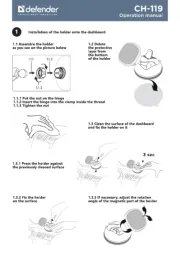
16 September 2025
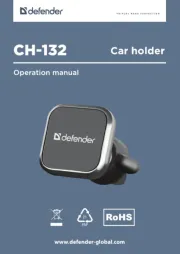
15 September 2025
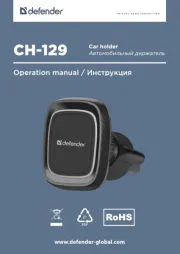
15 September 2025
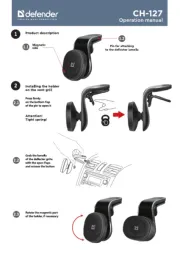
15 September 2025
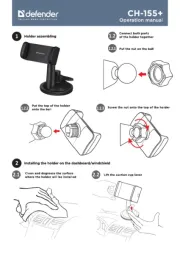
15 September 2025
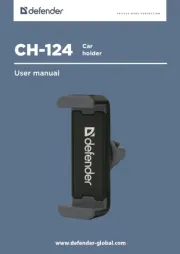
15 September 2025
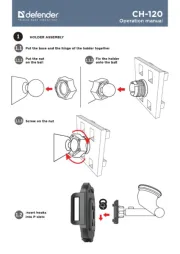
15 September 2025
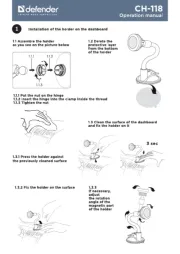
15 September 2025
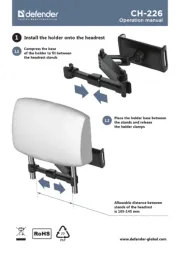
15 September 2025
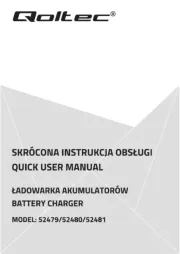
12 September 2025